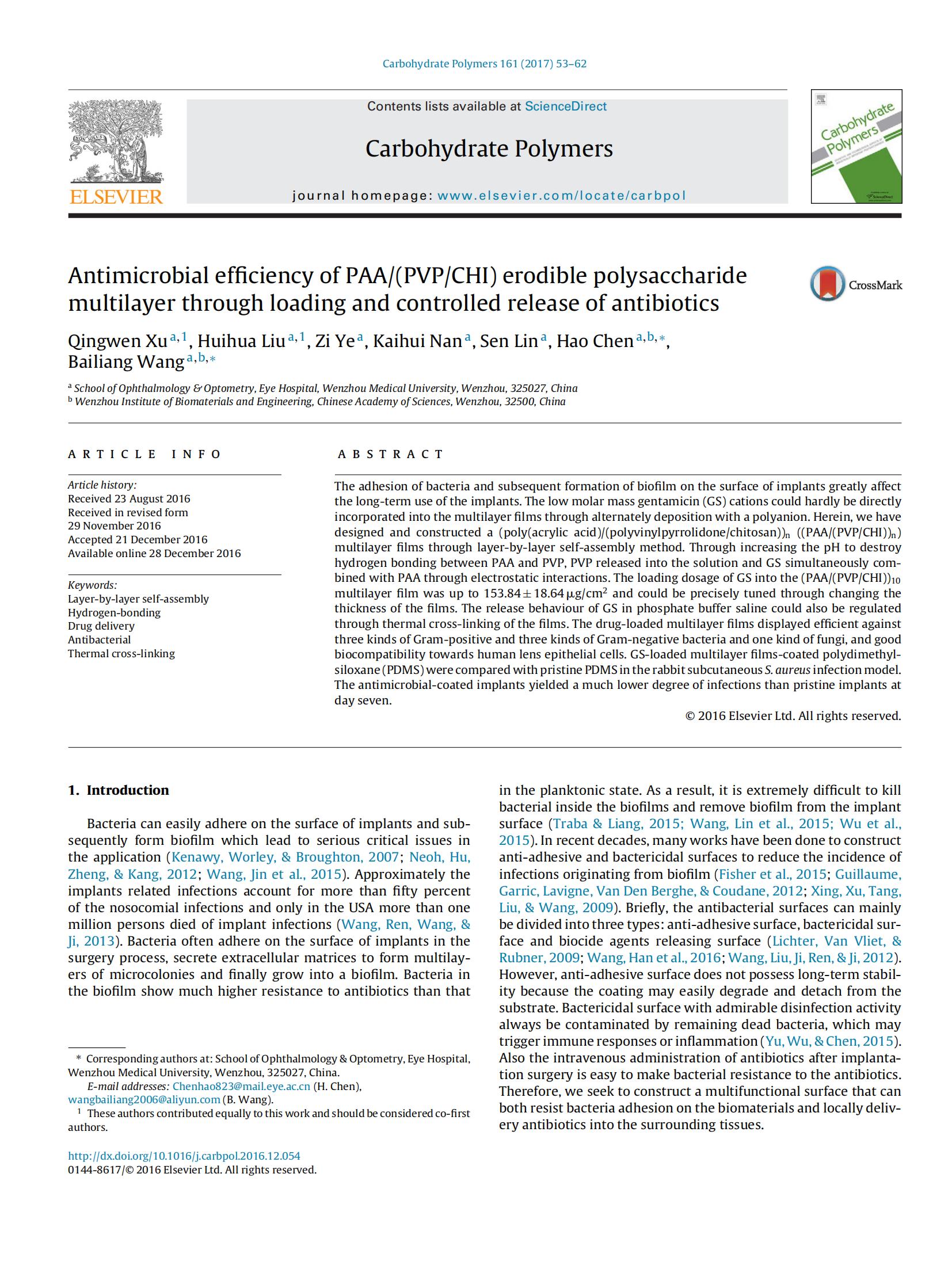The adhesion of bacteria and subsequent formation of biofilm on the surface of implants greatly affect the long-term use of the implants. The low molar mass gentamicin (GS) cations could hardly be directly incorporated into the multilayer films through alternately deposition with a polyanion. Herein, we have designed and constructed a (poly(acrylic acid)/(polyvinylpyrrolidone/chitosan))n ((PAA/(PVP/CHI))n) multilayer films through layer-by-layer self-assembly method. Through increasing the pH to destroy hydrogen bonding between PAA and PVP, PVP released into the solution and GS simultaneously combined with PAA through electrostatic interactions. The loading dosage of GS into the (PAA/(PVP/CHI))10 multilayer film was up to 153.84 ± 18.64 μg/cm2 and could be precisely tuned through changing the thickness of the films. The release behaviour of GS in phosphate buffer saline could also be regulated through thermal cross-linking of the films. The drug-loaded multilayer films displayed efficient against three kinds of Gram-positive and three kinds of Gram-negative bacteria and one kind of fungi, and good biocompatibility towards human lens epithelial cells. GS-loaded multilayer films-coated polydimethylsiloxane (PDMS) were compared with pristine PDMS in the rabbit subcutaneous S. aureus infection model. The antimicrobial-coated implants yielded a much lower degree of infections than pristine implants at day seven.
